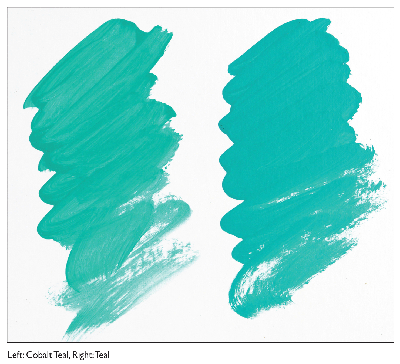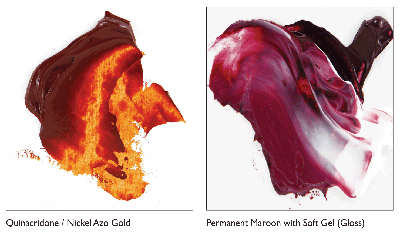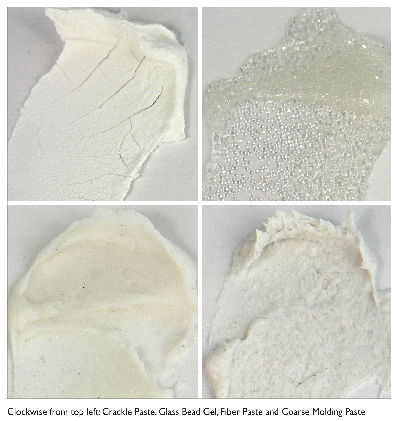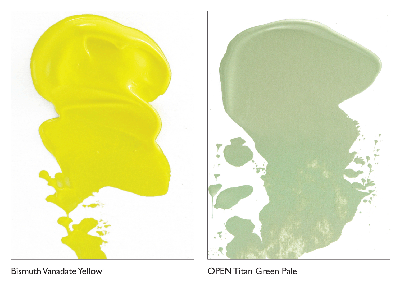The Color Graveyard
Graveyards can be fascinating places, full of history, imagination and stories. Places like Saint Louis Cemetery in New Orleans which holds the tomb of Voodoo Queen Marie LaVeau, or Forest Lawn in Los Angeles, with its array of replicated works of art and famous buildings.

Here at GOLDEN, we too have a graveyard of sorts that we refer to as the Color Graveyard. This is where colors, gels and textures go when we have to say good-bye for one reason or another. It’s also a metaphorical place where we gather from time to time to reminisce about colors that we’ve lost and to pass along the oral traditions of our history.
The most recent addition to the Color Graveyard was our beloved Cobalt Teal, a sizzling single pigment color made famous by GOLDEN Certified Working Artist Program Director Patti Brady, the pigment for which was discontinued by the supplier. While there are other suppliers that offer a Cobalt Teal pigment, none of the samples we tried could match the clean, crisp color that we were losing.
So, we had a choice to make. Knowing we were going to lose the color we love, do we go with another single pigment Cobalt Teal that falls short of the original? Or do we let this lovely color go over the bridge and instead create a blended color, working to achieve the Cobalt Teal color space as closely as possible, knowing that it would never be a direct replacement?
In this case, our choice was to go with the blend, in the hopes of being able to find a true Cobalt Teal in the future that will meet our standards and the standards of all the artists who are passionate about this color. In the meantime, the blended color that we chose to call Teal offers a color that is in a similar space, but at a much lower price point, since it is a series 3 compared to the true Cobalt Teal that was a series 7 color.

Speaking of colors that were hard to let go, the original Quinacridone Gold was another color that had an extremely loyal following and one that we were forced to change due to a discontinuation by the manufacturer. GOLDEN was the first to introduce a Quinacridone Gold to the market and it quickly became a signature color for us. Again we were loath to let the color space go entirely, so with the retirement of Quinacridone Gold, we developed a blend called Quin / Nickel Azo Gold. In this case, by comparison to the original, the new color was a bit redder in shade and didn’t have quite the same level of translucent glow. This color change happened back in 2004 and while plenty of artists will join us from time to time in the color graveyard with a longing remembrance for the original Quinacridone Gold, a whole contingency of artists have come to the GOLDEN brand in the meantime and have fallen in love with the beautiful Quinacridone / Nickel Azo Gold, appreciating this color as it exists today; a great color for glazing or warming things up when used in an underpainting.

If we walk down memory lane even further, there was another color that seemed to have a star-crossed lover.s type of relationship with the signature Quinacridone Gold. This color was called Naphthamide Maroon, a deep transparent maroon that did amazing things when paired with Quinacridone Gold. Only long time GOLDEN users would remember this single pigment color, since it was discontinued back in 1997 when again, the pigment became unavailable. For years, this color space remained elusive, and then in 2008 we developed a blend called Permanent Maroon. This smoky, reddish violet color glazes out to a deep dusty rose and dries with a sheen that is between glossy and semi-gloss.
Lest you think we only have fond memories of colors, we occasionally have had to bid farewell to other products as well. One such friend was Garnet Gel, formerly available in three grits: Fine, Coarse and Extra-Coarse. Garnet Gel was made with different grades of garnet sand, an abrasive, hard product that is most commonly used in the sand blasting industry. While garnet sand remains available on the market, in 2006 we began having problems getting a consistent quality of the raw material from our supplier. With a significantly widening variability in color and composition from batch to batch, we made the tough decision in 2008 to discontinue all grits for Garnet Gel.
While there is no substitute for the Garnet Gel color, at the time this product was discontinued our Technical Support Services team put together some suggestions for alternate ways to achieve the textural qualities, such as using Clear Granular Gel for the Garnet Gel (Coarse) texture and blending Coarse Alumina 1:1 with Regular Gel (Gloss) to achieve the type of grit previously found in the Garnet Gel (Fine).
The Custom Lab Bridge
 While it may not look like it from the outside, the world of artist.s grade pigments is a turbulent place where change is one of the few constants, as evidenced in part by the colors to which we have had to say good-bye. It is usually the folks in our Lab that get the bad news about raw material changes or eliminations first, but they are also usually the first to bring us new product ideas. Always on the lookout for new or unique pigments and materials, the Lab regularly brings in samples of things for us to try, sometimes it.s a better version of an existing pigment, but often it is something that is totally new and different. Over the years, this is how many of our gels and pastes have been developed, as well as some of our specialty colors.
While it may not look like it from the outside, the world of artist.s grade pigments is a turbulent place where change is one of the few constants, as evidenced in part by the colors to which we have had to say good-bye. It is usually the folks in our Lab that get the bad news about raw material changes or eliminations first, but they are also usually the first to bring us new product ideas. Always on the lookout for new or unique pigments and materials, the Lab regularly brings in samples of things for us to try, sometimes it.s a better version of an existing pigment, but often it is something that is totally new and different. Over the years, this is how many of our gels and pastes have been developed, as well as some of our specialty colors.

To give you a little insight into our process, each summer we make a very small amount of some new and unique products based on materials our Lab has come across in the last year. We get our Marketing and Tech Support people together, get out the palette knives and brushes and have a bit of a play session. Some products gets oohs and aahs right away, others get the thumbs down, and still others get the .this is kind of interesting, can we make it thicker,. or thinner, or more opaque, or any number of directions that would potentially increase the interest in the material. For the products that pass this first review, we decide which of these we will share with college faculty at an annual conference in February, a venue where we have traditionally sampled some of our experimental products. Write ups on these products are also usually included in the winter issue of Just Paint.
But before any of the products actually see the light outside our factory, they must pass a rigorous set of testing protocols to ensure that they will be stable, compatible with our standard products, and pass health and safety requirements. A few years ago we had a beautiful iridescent color that everyone loved, but when we made it and put it through the shelf stability test, we discovered that it would literally explode with time — an interesting effect perhaps, but not good!
Based on the feedback we receive on the experimental products, these may or may not proceed further into the New Product Development Process. Some of the recently released Gels and Pastes that started as Experimental Products include, Crackle Paste, Coarse Molding Paste, Fiber Paste and Glass Bead Gel.

The Artist’s Imagination
In addition to the Lab as a source for new products, many of the colors we introduce, as well as some of the textures have started as suggestions from artists. For example, OPEN Titan Green Pale, the newest addition to the OPEN line of colors was based on a request from several artists for a cool color to balance the warmth of Titan Buff. A couple of years ago we introduced Bismuth Vanadate Yellow after hearing from artists that they needed a strong opaque yellow that could also stand up against the elements when used in outdoor murals.
The harsh condition of a central New York winter is usually one of those things that lead us to gathering in small groups from time to time to reminisce and share a story or two about a color that once was. The decision to add a color or texture to the Color Graveyard is never taken lightly and is often initiated by circumstances beyond our control, but we share the stories to remember and we recognize the importance of looking forward to the new possibilities that are bound to come from an artist’s request or a discovery in the Lab.
About Dana Rice
View all posts by Dana Rice -->Subscribe
Subscribe to the newsletter today!
No related Post
